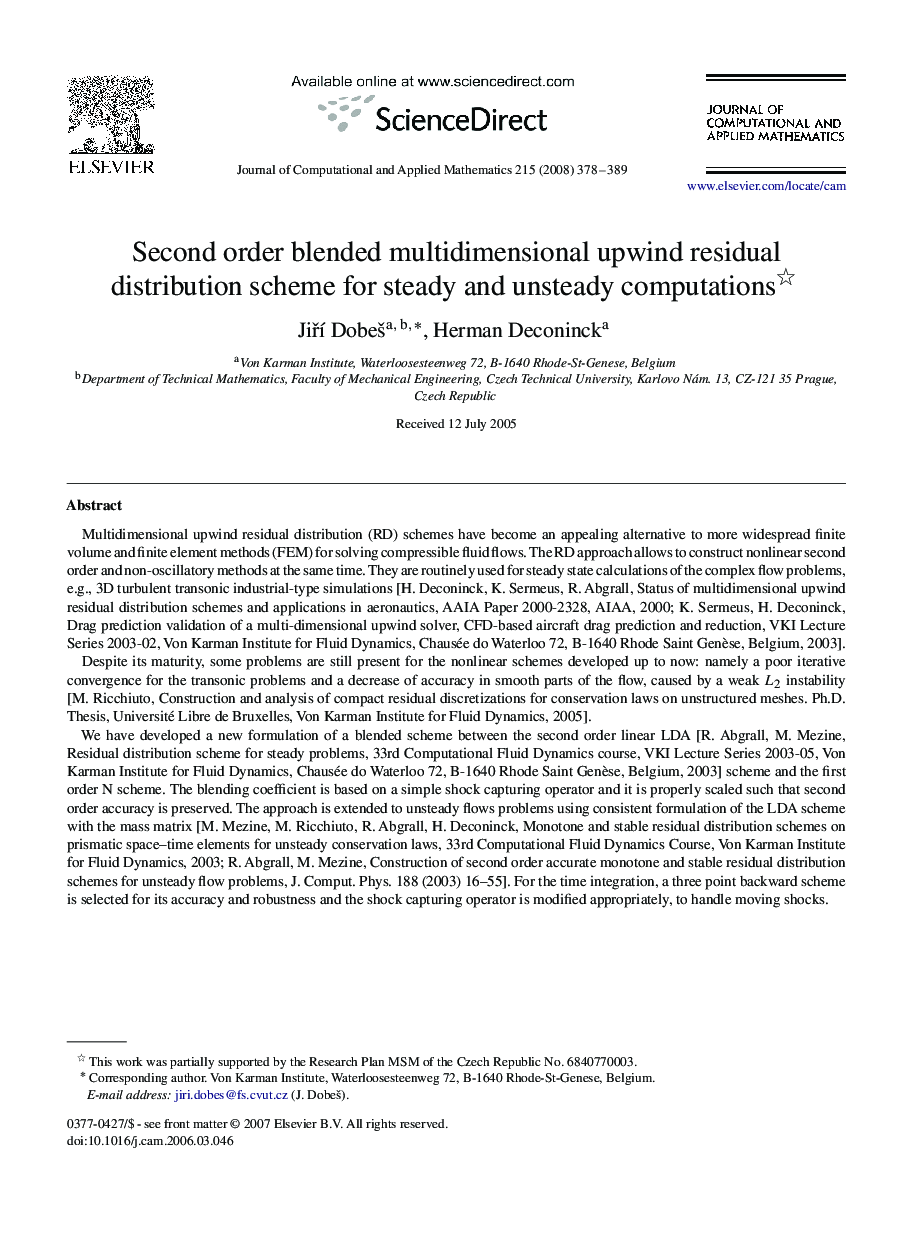| کد مقاله | کد نشریه | سال انتشار | مقاله انگلیسی | نسخه تمام متن |
|---|---|---|---|---|
| 4642296 | 1341338 | 2008 | 12 صفحه PDF | دانلود رایگان |

Multidimensional upwind residual distribution (RD) schemes have become an appealing alternative to more widespread finite volume and finite element methods (FEM) for solving compressible fluid flows. The RD approach allows to construct nonlinear second order and non-oscillatory methods at the same time. They are routinely used for steady state calculations of the complex flow problems, e.g., 3D turbulent transonic industrial-type simulations [H. Deconinck, K. Sermeus, R. Abgrall, Status of multidimensional upwind residual distribution schemes and applications in aeronautics, AAIA Paper 2000-2328, AIAA, 2000; K. Sermeus, H. Deconinck, Drag prediction validation of a multi-dimensional upwind solver, CFD-based aircraft drag prediction and reduction, VKI Lecture Series 2003-02, Von Karman Institute for Fluid Dynamics, Chausée do Waterloo 72, B-1640 Rhode Saint Genèse, Belgium, 2003].Despite its maturity, some problems are still present for the nonlinear schemes developed up to now: namely a poor iterative convergence for the transonic problems and a decrease of accuracy in smooth parts of the flow, caused by a weak L2L2 instability [M. Ricchiuto, Construction and analysis of compact residual discretizations for conservation laws on unstructured meshes. Ph.D. Thesis, Université Libre de Bruxelles, Von Karman Institute for Fluid Dynamics, 2005].We have developed a new formulation of a blended scheme between the second order linear LDA [R. Abgrall, M. Mezine, Residual distribution scheme for steady problems, 33rd Computational Fluid Dynamics course, VKI Lecture Series 2003-05, Von Karman Institute for Fluid Dynamics, Chausée do Waterloo 72, B-1640 Rhode Saint Genèse, Belgium, 2003] scheme and the first order N scheme. The blending coefficient is based on a simple shock capturing operator and it is properly scaled such that second order accuracy is preserved. The approach is extended to unsteady flows problems using consistent formulation of the LDA scheme with the mass matrix [M. Mezine, M. Ricchiuto, R. Abgrall, H. Deconinck, Monotone and stable residual distribution schemes on prismatic space–time elements for unsteady conservation laws, 33rd Computational Fluid Dynamics Course, Von Karman Institute for Fluid Dynamics, 2003; R. Abgrall, M. Mezine, Construction of second order accurate monotone and stable residual distribution schemes for unsteady flow problems, J. Comput. Phys. 188 (2003) 16–55]. For the time integration, a three point backward scheme is selected for its accuracy and robustness and the shock capturing operator is modified appropriately, to handle moving shocks.We present a numerical solution of several challenging test cases involving the solution of the Euler equations from the subsonic to the hypersonic regime. All the tests shows very good accuracy, robustness and convergence properties.
Journal: Journal of Computational and Applied Mathematics - Volume 215, Issue 2, 1 June 2008, Pages 378–389